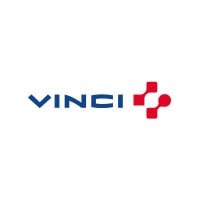
GMR Group
GMR Group is a leading global infrastructure conglomerate with significant expertise in airports, energy, transportation, and urban infrastructure. GMR Airports is Asia’s largest private airport operator with the world’s 2nd largest passenger handling capacity (over 100 million annually). It operates key airports like Delhi, India’s largest and fastest-growing airport, Hyderabad, an innovative greenfield airport, and New Goa, India's first destination airport. Expanding its overseas footprint, the company is developing Kualanamu International Airport in Medan, Indonesia, (with Angkasa Pura II) and provides technical services to the renowned Mactan Cebu International in the Philippines. The Group is also currently developing two major greenfield airport projects in India and Greece. As a pioneer in implementing the path-breaking Aerotropolis concept in India, GMR Airports is also developing unique airport cities around its airports in Delhi, Hyderabad, and Goa. GMR Aero Technic is India’s largest integrated world-class third-party MRO and provides complete technical support to aircraft operators. GMR’s energy businesses have an installed capacity of over 3,000 MW capacity. With a significant focus on green energy, the company fosters sustainability by harnessing the power of wind, water, and sun for energy generation. The Transportation and Urban Infrastructure division focuses on surface transport projects including Roads, Railways, and Airstrips/ Runways. The Group’s EPC business is working on the design and construction of the prestigious Eastern Dedicated Freight Corridor project of DFCCI (Dedicated Freight Corridor Corporation of India). GMR Group is also developing a multi-focus Special Investment Region in Tamil Nadu. The GMR Varalakshmi Foundation, the group's CSR arm, aims to enhance people's lives by improving skills, education, and healthcare infrastructure, fostering a better quality of life generally wherever the Group has business presence.






